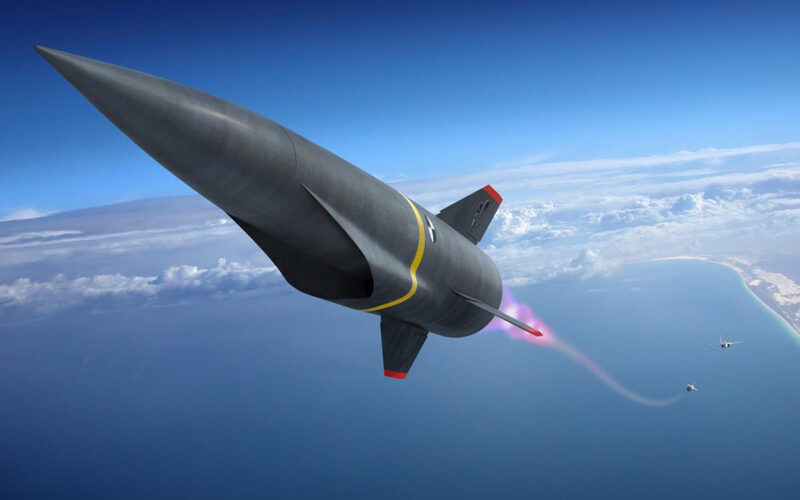A hypersonic missile under development accidentally separated from a B-52 aircraft during tests in the United States, according to media reports.
A B-52 strategic bomber lost a hypersonic missile being developed as part of the Hypersonic Air-breathing Weapon Concept joint program of the Defense Advanced Research Projects Agency (DARPA) and the United States Air Force, Aviation Week reported. The incident happened during a captive-carry flight test, according to sources familiar with the matter.
Contacted by the media, a DARPA spokesman answered that “details of those flight demonstrations are classified.” The cause of the incident, which allegedly involves an aircraft from the 419th flight test squadron based at Edwards base in California, is reportedly under investigation.
The HAWC is a scramjet-powered missile that can reach a speed between Mach 6 and Mach 10. Two manufacturers, Lockheed Martin and Raytheon, are currently competing on the project. It is unclear whose missile was involved in the incident.
The B-52 is used to test both hypersonic platforms currently developed by the United States Air Force, namely the HAWC, and the ARRW (Air-launched Rapid Response Weapon) also being developed by Lockheed Martin, whose maiden test flight took place on June 2019. With a first flight initially scheduled for 2019, the HAWC seems to be lagging behind. A third program, the Hypersonic Conventional Strike Weapon (HCSW) was canceled in February 2020 due to budget constraints.
Hypersonic weapons became a priority of the United States military in the last few years after the emergence of similar platforms in the arsenals of other world powers, such as the Russian Zircon and Kinzhal missiles or the Chinese DF-ZF. In May 2020, a Russian military source announced that a new hypersonic anti-ship missile, most likely a variant of the Kh-47М2 Kinzhal missile, had been successfully tested from a Tu-22M3M strategic bomber.
European countries also aim to address this new threat. In November 2019, the missile manufacturer MBDA received the green light for its Twister (Timely Warning and interception with Space-based monitoring Theater) project, an interceptor able to handle emerging threats such as “maneuvering ballistic missiles with intermediate ranges, hypersonic or high-supersonic cruise missiles, hypersonic gliders, and more conventional targets such as next-generation fighter aircraft.” The program regroups Finland, the Netherlands, Spain, and Italy under the industrial leadership of France.

